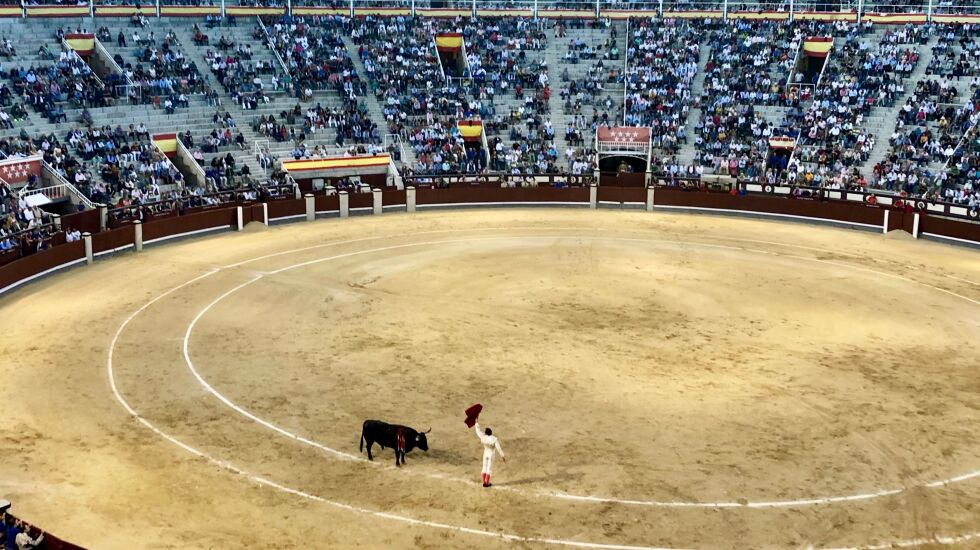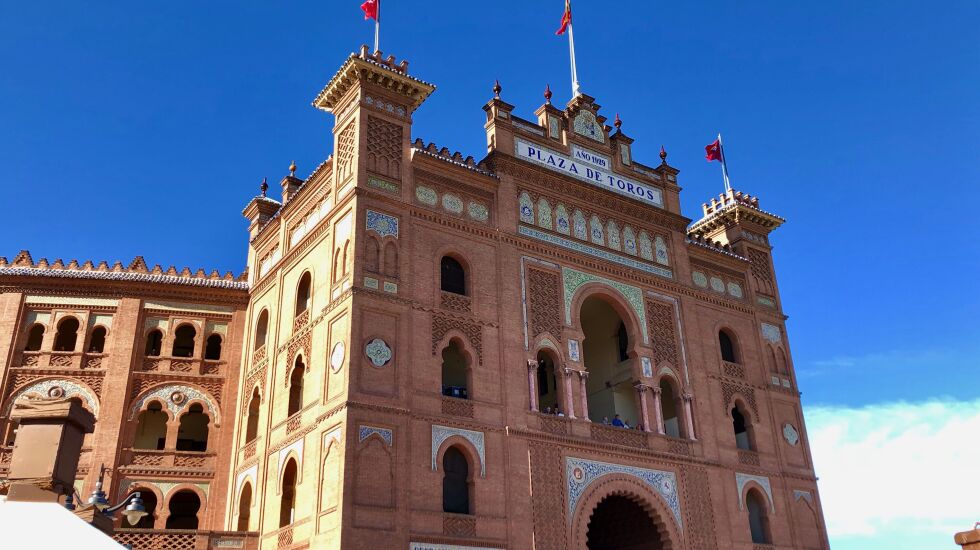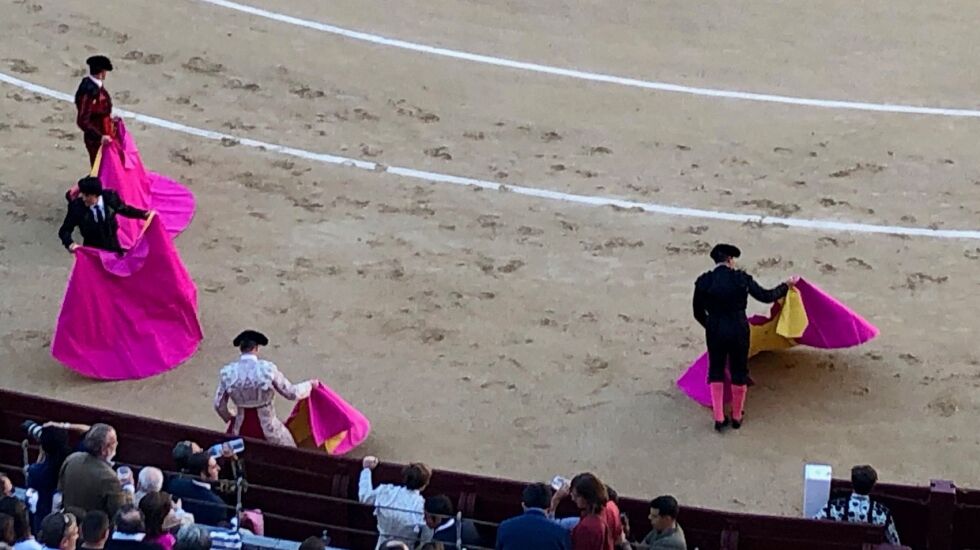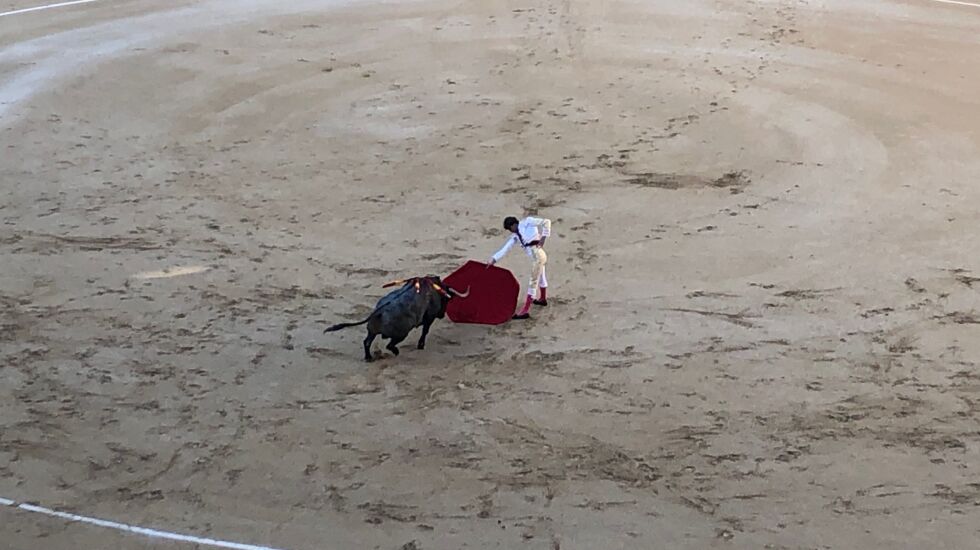
Jane Addams went to a bullfight in Madrid and it changed her life, for the better.
More about that later.
I toss out that fact not to use the famed Chicago reformer and social worker as a human shield to cover my own attendance at a bullfight — which did not prompt me to devote my life to good works, at least not yet. But as a reminder that morality is complicated.
Though the reason I went to a bullfight is fairly straightforward: I found myself in Madrid on a Sunday afternoon in early October, toward the end of bullfighting season. In fact, when my wife declared we were going to Spain, attending a bullfight was the first activity I thought of, before the notion of Prado artworks or Gaudi architecture crossed my mind.
Honestly, it was the one thing I really wanted to do, fulfilling the cliche and touchstone of Spanish culture, plus a hangover from a lifetime reading the works of Ernest Hemingway, with his idolization of machismo, hunting, fishing and the confronting of angry cattle.
My wife is not a fan of Hemingway and was not enthusiastic about the idea. Really? A bullfight? A few hours of bloodletting and sadism? On our vacation?
She didn’t speak those words, but I drew them out of her expression, and I mustered two arguments. First: “We have to go, we don’t have to stay.” It wasn’t hugely expensive. Tickets are as cheap as 5 euros — about $5 with the strong dollar. Go, pop our heads in, take a look, flee in revulsion if need be. I think my primary goal was to tell people that I had been to a bullfight, not quite grasping the head-shaking censure I would eventually face. (“How could I not?” I flustered to one friend. “Because it’s the 21st century,” he answered, coldly.)
Second, and this addressed the moral objections: “Those bulls are dying whether we go or not.” Bulls have been fought in public spectacle since Roman times. The practice isn’t going to crumble because my wife and I take in a flamenco show instead. Leave virtue signaling to smug zealots.

In fact, I could argue — heck, am arguing — that going to the bullfight, seeing what it is like, not turning away, is the more moral act, as opposed to ignoring it and pretending that such things do not exist. Own the sin. Look it in the face.
While having fun.
We took the subway from our hotel at the Plaza del Sol. It was exciting just to come out of the Ventas metro stop, and see the Plaza de Toros de la Ventas, a brick Moorish fantasy with horseshoe arches and brilliant tile work. Almost overwhelming. I sidestepped the detached booths selling jacked-up tickets (trust Rick Steves; he knows) got in line before the stadium ticket windows. Your choice in a bullfight is sun or shade, sol o sombra, and I chose Section 8, in the shade and closest to the bullfight, bought a pair for 35 euros apiece.
Once inside, we encountered a vendor renting cushions — squat leather pillows for a few euros each. I carry my own cushioning with me, but my wife was drawn. “How often do you get the chance?” she asked. So we hired two pillows. I noticed stands selling cigars, and while a good Cohiba would have rounded out the overall effect, I didn’t want to press my luck and impose on her good graces any more than I already was by instigating our being there.
The ring was perfectly round, with a wide main section and two upper tiers. Without any advertising whatsoever. At 6 p.m, the appointed hour, the bullfight began. I expected more pageantry. A pair of riders with feathered caps, followed by a dozen matadors, on foot, then half a dozen picadors — pikemen on heavily armored horses used to goad the bulls into action. Smatterings of applause and no music at all.

So what happens in a bullfight? I won’t go into the points system and rules. As with the competitive rodeo I attended in Cody, Wyoming, I went to see and experience a colorful regional spectacle, not to become a knowledgeable fan. A bull is released in the ring, runs around — I’d never seen a bull run, all ebony beauty and muscle. The fight is much more of a team effort than I expected — one matador draws him in his direction, waving his pink cape, the bull heads there, then that matador ducks behind a barrier, and another matador across the ring draws him over. The idea seems to be to tire the bull.
And to annoy him. Given his druthers, the bull would just stand there. That much is clear. A good portion of the fight is designed to get him mad, particularly the banderilleros, men who approach holding out a pair of barbed sticks at arm’s length, then, as the bull approaches, jam them into the bull’s back, where they flop around. Even then, the bulls do not immediately run down the banderilleros, which is what I’d do, but lope away, puzzled.
The main matador then does a series of passes designed to show off his courage and style. To me, that was the most intriguing part: the voguing the matador does, thrusting his hip, jutting his chin, striking poses, part Mikhail Baryshnikov, part Mick Jagger.
It never seemed a fair fight. Bulls are not smart animals. They are supposedly color blind, and supposedly drawn to the motion of the cap, not the color. But they also were mesmerized by capes spread on the dirt. There is always the risk of being caught by a horn, which happened once, maybe, in two hours. Otherwise, each fight was a near carbon copy of the one before.

Is this a sport? Hemingway, who has an unjust reputation as a brusk, murderous outdoorsman actually put it thoughtfully and well. “I am not going to apologize for bullfighting,” he wrote in the Toronto Star in 1923. “It is a survival of the days of the Roman Colosseum. But it does need some explanation. Bullfighting is not a sport. It was never supposed to be. It is a tragedy. A very great tragedy. The tragedy is the death of the bull.”
That sounds right. We stayed for five of the six bullfights, nearly two hours. I kept hoping we could leave on a cheery note, but it kept getting worse and worse. The bullfighter finishes the bull off with a sword, ideally with a swift stroke to the nape of the neck, severing its spinal cord. But several times the sword ended up skewing through the side of the bull, projecting horribly out his blood-smeared flank while the bull, instead of discreetly collapsing against the wall, trotted around, dying.
“If could have the bullfight without killing the bull, it would be a very pleasant way to spend the day,” my wife said afterward, and certain countries — such as Bolivia — do just that.
We left after the fifth bull was slain — which, coincidentally, was when Jane Addams fled her corrida, after realizing that she was all alone, mesmerized by the spectacle, while her friends had slipped away, one by one. She found them “stern and pale with disapproval of my brutal endurance.”
Addams realized, on the spot, as she recounts in “Twenty Years at Hull-House” that she was “lulling my conscience with a dream’s scheme,” gadding about Europe with her particular friend, Ellen Gates Starr, when there was work to be done. Not willing to any longer be the “dupe of a deferred purpose,” Addams guided herself and her friend to Chicago, where they opened their famous settlement house, founding the city’s first kindergarten and playground, teaching immigrants and aiding the poor. Addams spent the rest of her life advocating for justice, for workers’ rights and against child labor.
So good can come out of attending a bullfight, if you let it.







